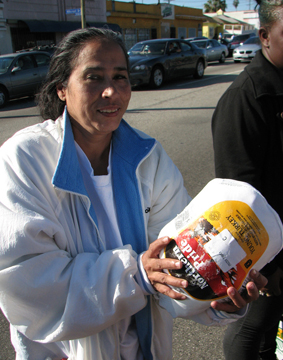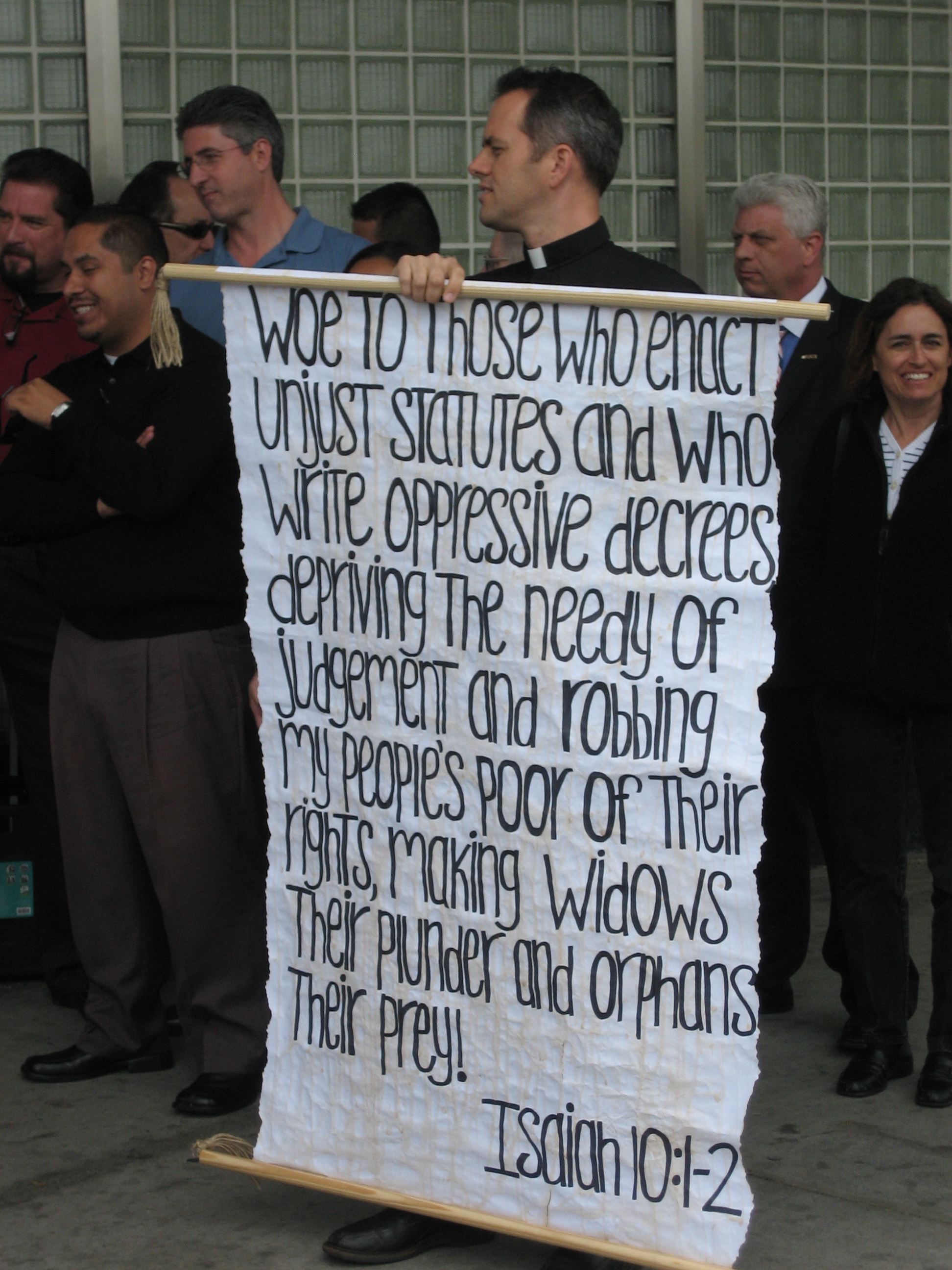 E.J. Jackson knew how desperately people would need him this year.
E.J. Jackson knew how desperately people would need him this year.
Before dawn he was up, lighting bonfires for the people already in line for his turkey giveaway.
He’s been doing this for 23 years, but this year the need was the worst he’s ever seen.
His volunteers have been working nonstop for the last few days.
“…We had to make up 20,000 boxes, 20,000 turkeys…And it gets bigger and bigger and bigger.”
Jodie Fallon’s a volunteer with the Jackson Limousine Dinner Giveaway.
She said last year it pulled in ten thousand people, tops.
Last week, Jackson was worried the donations would fall far short of the need.
But corporate and private donors stepped up to help.
Now he’s emptying two mac-trucks full of frozen turkey.
Since four in the morning, Fallon’s been…
“…Packing and packing and we’re still packing right now…I just had to get a break. I snuck out….but it’s a really good event and it helps a lot of people. See how many people out here?”
One of these people is Dee Brown. I met her when she was getting her friend to help her cut in front of people who’d been waiting in line since last night.
“Are people going to be okay with that? I hope so, I’m just going to slide in and pretend like I was part of the picture”
If you can’t tell by the lack of line etiquette, she’s new here.
She used to work in a hospital but got laid off. Her income’s all dried up.
And finding herself in line for food? It’s…
“Humbling, very humbling.”
She says her unemployment check hardly covers the rent. And everywhere, prices are rising.
“Well times are hard. You know, inflation goes up… Everything went up. You know, just a bag of potato chips is five dollars…But I didn’t notice that until I got laid off. And so when they offer things out here for the community, you know at the time I didn’t need it, but now since I’m laid off, I’m out here just like everybody else.”
Which is exactly why Jackson feels he has to return every year, Turkeys and groceries in hand, the Santa of Thanksgiving.









.jpg)

.jpg)
.jpg)






